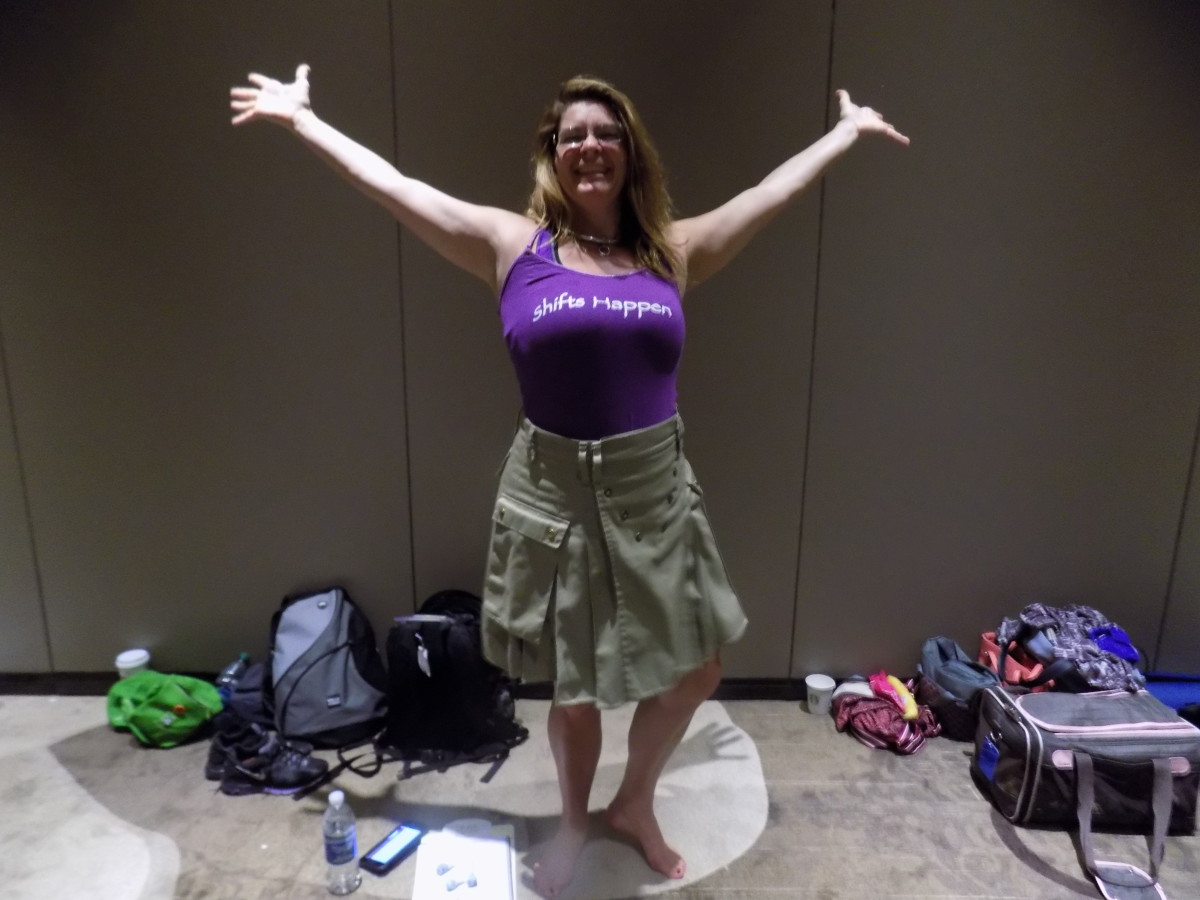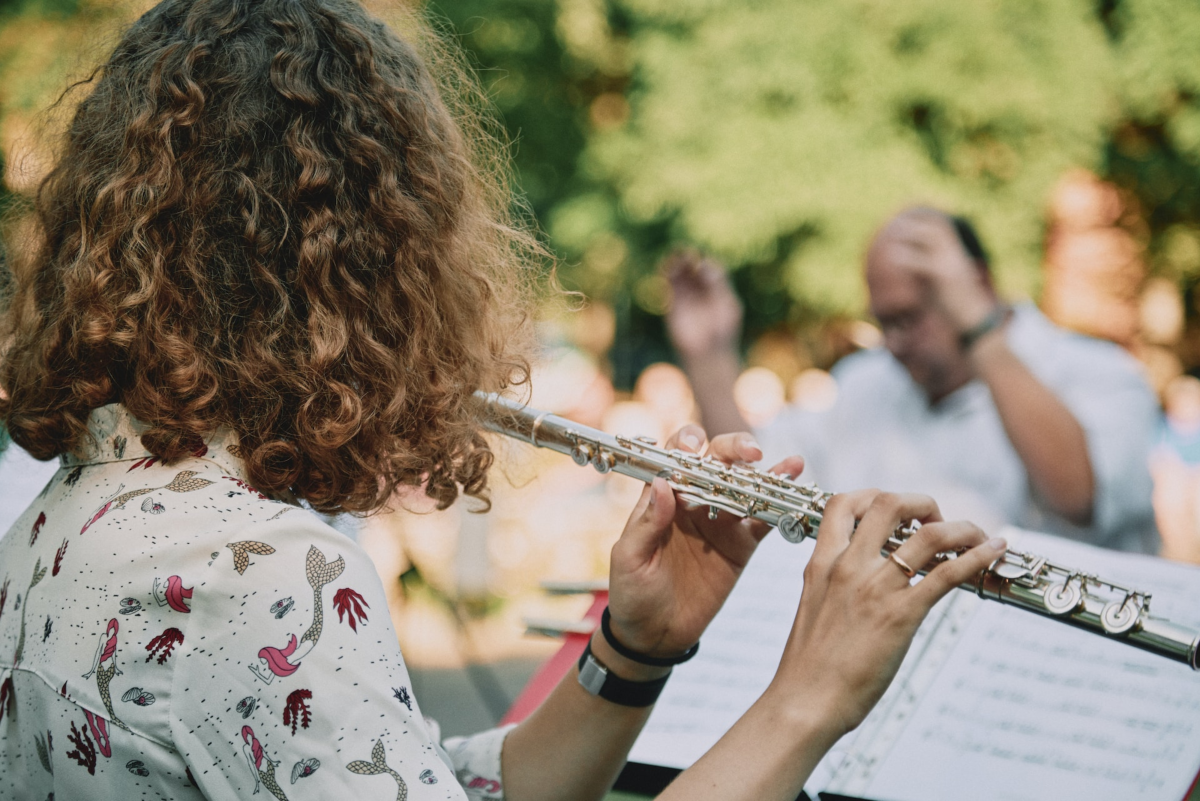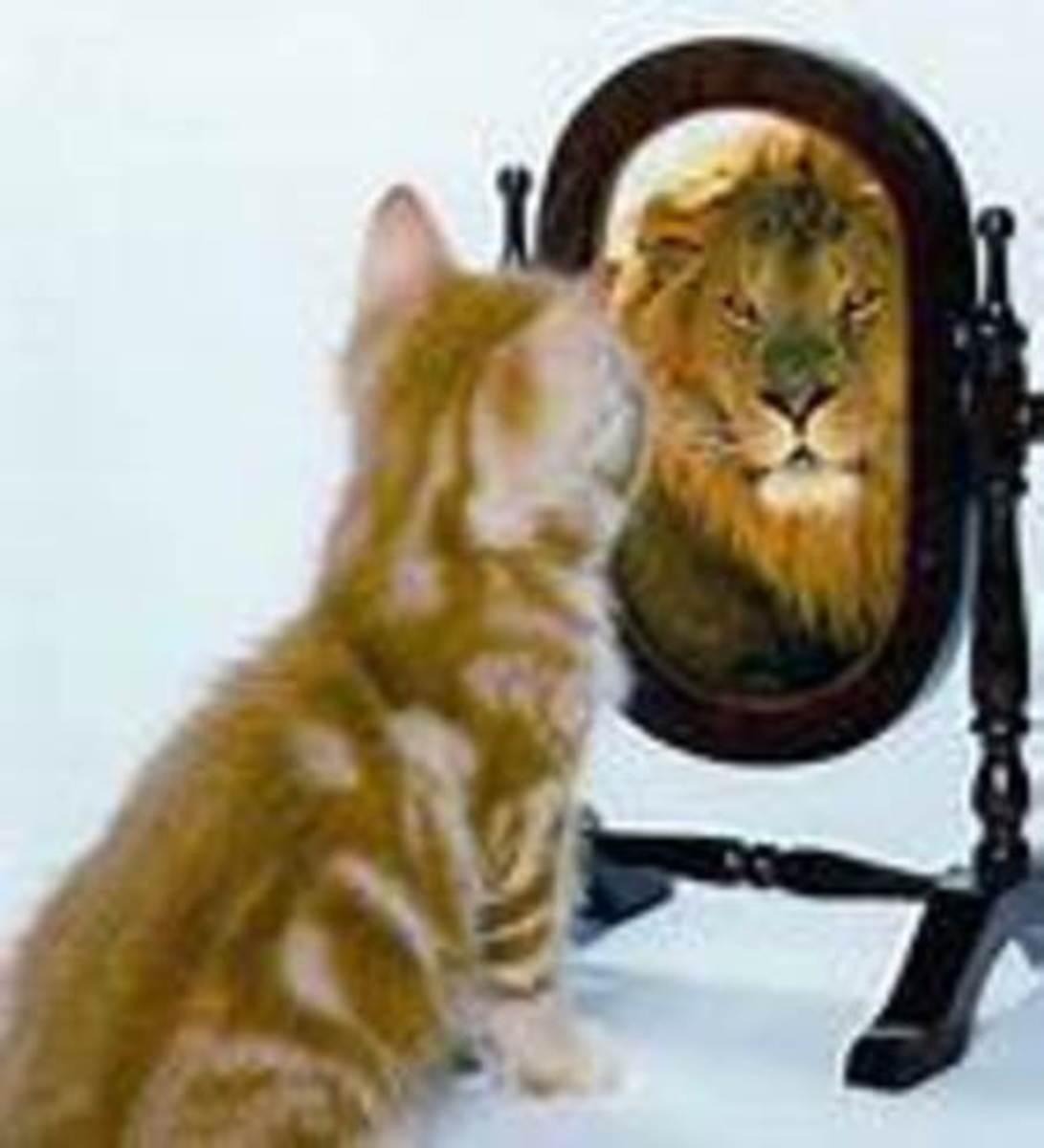- HubPages»
- Health»
- Mental Health»
- Stress Management
Breathing Exercises for Stress Relief
1. Full Diaphragmatic Breathing
Correct use of the breath is one of the best ways to combat stress. The breath is always with us, cannot be lost or stolen, and it's free. Usually in times of stress, one of the first things that happens is the breath becomes short and shallow, the shoulders tense and lift, and the jaw clenches. Until we learn to watch ourselves, we are often unaware that we are doing this habitual response to anxiety and stress.
Taking three deep inhales as soon as you notice your mind racing, your emotions rising, and your levels of stress increasing brings your mind back to a place of stillness and anchors you in the present, allowing effective action instead of reacting in a way that might cause damage, pain, and regret. Practice with the video below, and do this several times each day, after a stressful phone call or encounter with a client, during an emotionally charged encounter with your spouse or child, before you step into a potentially stressful meeting room, while standing in line at the bank, and at a red light while you are stopped in traffic. Notice the difference.
Full Diaphragmatic Breath Yoga Pranayma for Beginners

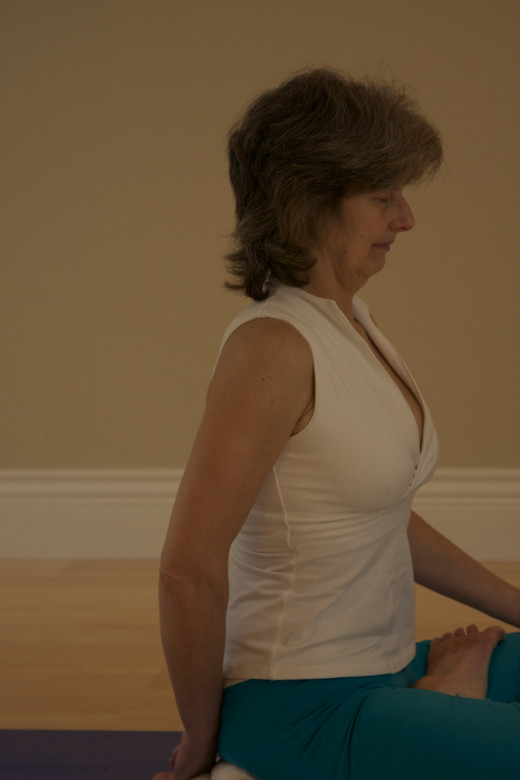
2. Kapalabhati
Kapalabhati, or Shining Skull breath, is a powerful breath practice that has energetic and physical benefits. On a physical level, the strong abdominal pumping tones and massages the organs, stimulating and bringing fresh, oxygenated blood to the liver, kidneys, digestive and excretory organs, and the reproductive system. On an energetic level, the Kapalabhati breath cleanses the evergy field, and works to lift life energy, or Kundalini, from the bottom of the spine toward the top of the head. Since this breath can have powerful effect, it is best to practice it under the tuition and supervision of a qualified yoga teacher.
It is important to notice that there is no inhalation with this breath: by pressing the abdomen out, we lower the diaphragm, and this automatically draws air into the lungs as a consequence of the vacuum created as the lungs expand toward the adominal cavity. On the exhalation, pull the belly forcefully toward the spine and exhale through the nose, as if you were blowing your nose.
Here are the steps:
- Inhale fully, and exhale completely.
- Press the abdomen out, passively filling the lungs. This is the "Two" count.
- Exhale sharply through the nose by pulling the belly toward the spine. Since the exhalation is more active than the inhalation, this is the "One" count.
- Press the belly out, "One."
- Exhale sharply through the nose, pulling the belly toward the spine, "Two."
- Repeat rhythmically for ten to twenty cycles, then relax and breathe naturally.
- Repeat the whole sequence of ten or twenty cycles again twice more, performing three rounds altogether.
- At first, students find it helpful to hold their right hand on the belly to help focus awareness on the motion of the abdomen. Listen to the sound of your breath as you do Kapalabhati: there should only be the sound of the exhalation, without any sound on the passive inhalation. This is how singers keep their breath going without gasping for breath--they press out the abdomen and use the drop of the diaphragm to passively and silently fill the lungs.
- Practicing Kapalabhati regularly, especially in the morning when you first get up will balance blood chemistry by fully oxygenating the blood, and stimulates the intestines to move stool through the bowel and prevent constipation.
Anuloma Viloma
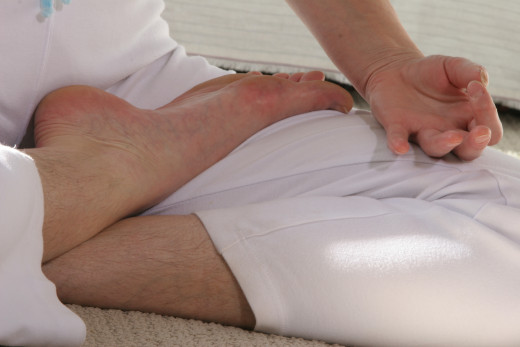
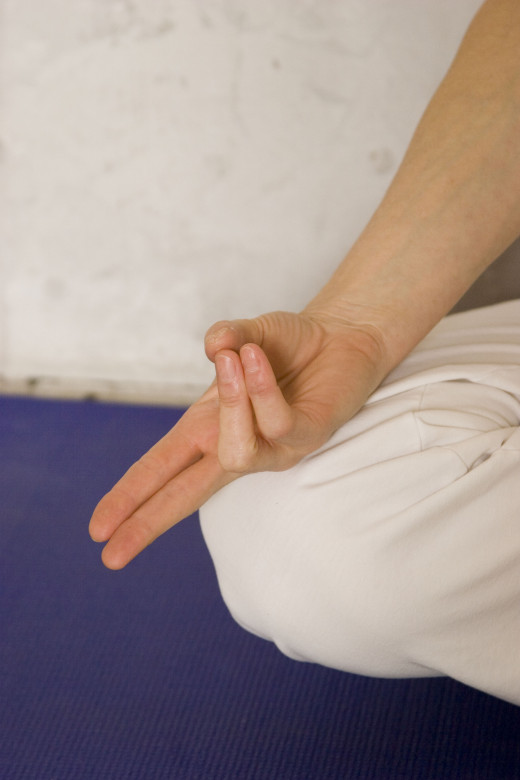
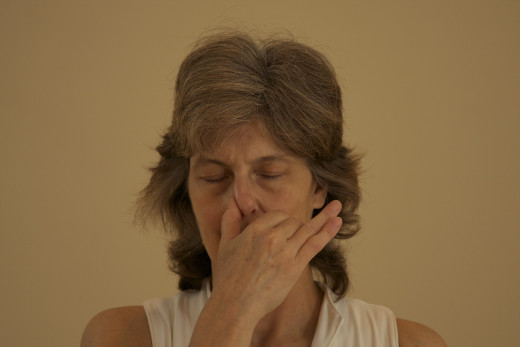



3. Anuloma Viloma Alternate Nostril Breathing
Anuloma Viloma, also called Nadi Shodana or Alternate Nostril Breathing, is a gentle balancing breath practice. It is best practiced after Kapalabhati, which had cleansed the energy field, so now the balancing can be effective.
Yoga scriptures such as the Yoga Sutras of Patanjali teach that there is a subtle but definite connection between each of the nostrils and each of the currents of life energy that move in channels, or nadis, up the spine, criss-crossing at seven main places, called chakras. These chakras are located in the root of the spine, near the reproductive organs, near the spleen or solar plexus, near the heart, near the throat, near the forehead, and above the crown of the head. They form the fundamental structure of the human energy anatomy.
If you picture this movement of energy as you practice the Anuloma Viloma Breath, you will strengthen the benefit of the practice, for where the mind goes, energy follows.
Here are the steps:
- Form the Chin Mudra with your left hand by touching the tip of the index finger to the tip of the thumb, and relax your left hand palm up or palm down on your left thigh.
- form the Vishnu Mudra with you right hand by folding the right index and third finger across the palm, and keeping the right baby and fourth fingers and the thumb more or less straight. In some variations, the right index and third finger are kept straight and touched lightly to the Ajna Chakra between the eyebrows. It is important that the right index and middle fingers not touch the nose, for the polarity on each fingertip is different, and can interfere with the correct flow of the energy up the nadis.
- Inhale fully, and exhale completely. Then inhale, block the right nostril with the right thumb, and exhale through the left nostril to a count of eight.
- Without moving the hands, inhale through the left nostril to a count of four and hold the breath.
- Block the right nostril with the right thumb and the left nostril with the right fourth and baby fingers, hold the breath for a count of sixteen, close the eyes and focus the awareness on the point between the eyebrows. Picture lifting energy up your spine.
- Open the right nostril, and exhale through the right nostril to a count of eight.
- Inhale through the right to a count of four, hold the breath
- Block both nostrils, hold the breath for a count of sixteen
- Open the left nostril and exhale through the left for a count of eight.
- Continue for six to ten cycles, then breathe naturally, relax.
- Then lie down on your back in Svasana for three to five minutes and allow the benefits of the breath practice to settle into your physical cells and organs.
Quiet the body, the breath and the mind in Svasana
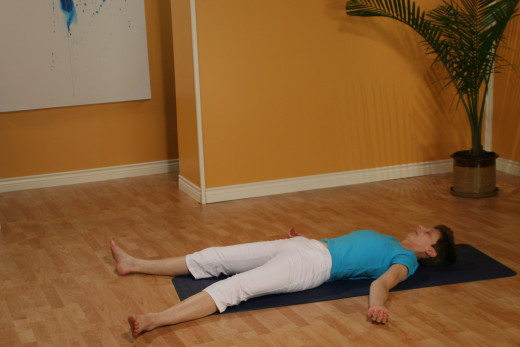
4. Relax in Svasana and Notice the Four Parts to the Breath
Lying on your back in Svasana, as shown above, take three deep inhales into your belly, your ribs, your collarbones, and exhale completely.
Then relax, breathe naturally, and watch your breath. Each time you become aware that your mind has drifted away from watching your breath, bring it back. It is easy for the mind to keep churning up thoughts, worries, fears, and memories. This is the nature of the mind. As we start to practice meditation and learn to quiet the mind, we are never trying to stop thinking, but merely to watch the mind in its busyness, and keep letting thoughts go as we focus on the breath.
Start to notice the four parts to the breath: inhale, pause, exhale, pause.
This breath cycle is the full natural breath. Never push your breath nor try to make anything happen with it, but merely allow your body to breathe, and watch it.
Square Breathing
Inhale
| Notice the full, deep inhalation with the belly rising as the lungs fill.
|
Pause
| Notice the short pause, or Kumbaka, at the top of the breath with the lungs full. During this pause, the exchange of gases takes place in the small sacs or alveoli in the lungs, allowing carbon dioxide to move out of the blood into the lungs to be exhaled, and allowing fresh oxygen to move into the blood to be circulated to the cells and organs.
|
Exhale
| Notice the long, slow exhalation, longer than the inhalation, when the belly relaxes toward the spine.
|
Pause
| Notice the pause at the end of the outbreath. This pause is slightly longer than the pause with the lungs full. Here the body is completely still and relaxed for a few seconds, with no hunger for air. This is a window of opportunity for the mind to become very still also, until the hunger for air arises again and the next cycle of breath begins.
|
5. Practice Square Breathing
Remaining on your back in Svasana with your eyes closed, practice Square Breathing. Count rhythmically and keep each part the same length.
Here are the steps:
- Exhale and empty your lungs
- Inhale, two,three, four
- Hold the breath, two, three, four
- Exhale, two, three, four
- Hold the lungs empty for four
- Repeat five or six rounds, then breathe naturally and relax.
6. Seven Chakra Breathing
From Svasana, come to standing for Seven Chakra Breathing. This is a powerful energetic breath practice that cleanses the energy field and opens the chakras, or seven main energy wheels in the spine. Here are the steps:
- Stand in Mountain Pose, Tadasana with your hands relaxed at your sides
- Exhale, cross your wrists behind your back so each hand crosses to the opposite side of the midline of the body
- Inhale, sweep your arms out to the sides and over your head, touch your hands together, hold the breath
- Separate your hands shoulder width, bring them together again above your head, then lower hands to your heart
- Exhale, lower your hands to your hips
- Inhale, scoop life energy from near your hips up toward your heart, palms facing up
- Exhale, lower your hands and cross your wrists behind your back
- Continue the cycle for 8 to 10 rounds. Close your eyes as you practice, and feel the energy move off your hands. Some people feel tingling, or pressure, or a sticky sensation or temperature change as the hands come together and move apart.
7. Svasana and Mental Anuloma Viloma
Relax in Svasana in Svasana again and take three deep inhales.
Now without using the fingers to touch the nostrils, use the mind to direct the movement of breath in mental Anuloma Viloma. Picture, feel or imagine the breath moving in the sequence of movements practiced above in Alternate Nostril Breathing.
- Exhale, picture, feel or imagine the breath leaving through the left nostril
- Inhale, picture the breath entering through the left nostril
- Exhale, picture the breath leavingthrought the right nostril
- Inhale, picture the breath entering through the right nostril, then
- Exhale through the left, completing one cycle of breath.
- Continue the sequence rhythmically, and count the cycles. Each time you exhale through the left nostril, count another cycle. After five cycles, inhale through both nostrils, exhale through both nostrils, then do another round of five breath cycles.
- Each time you forget your count, or notice your mind has drifted off somewhere, bring your mind back and start again.
- Then relax in Svasana for Final Relaxation
8. Guided Relaxation
Practice as many of these breath practices as you wish, as often as you can, and ideally every day. Practice them more or less sequentially in the order described above. The whole breath practice takes about 30 to 45 minutes.
When you have finished what you intend to do that day, integrate the benefits with seven to ten minutes of conscious relaxation. This is one of the most effective ways to combat stress, for conscious relaxation allows your body to metabolize stress hormones like adrenaline, and it allows your mind to move deeply into inner stillness. The brain waves shift to a theta state of deep relaxation and meditation, and the body heals.


